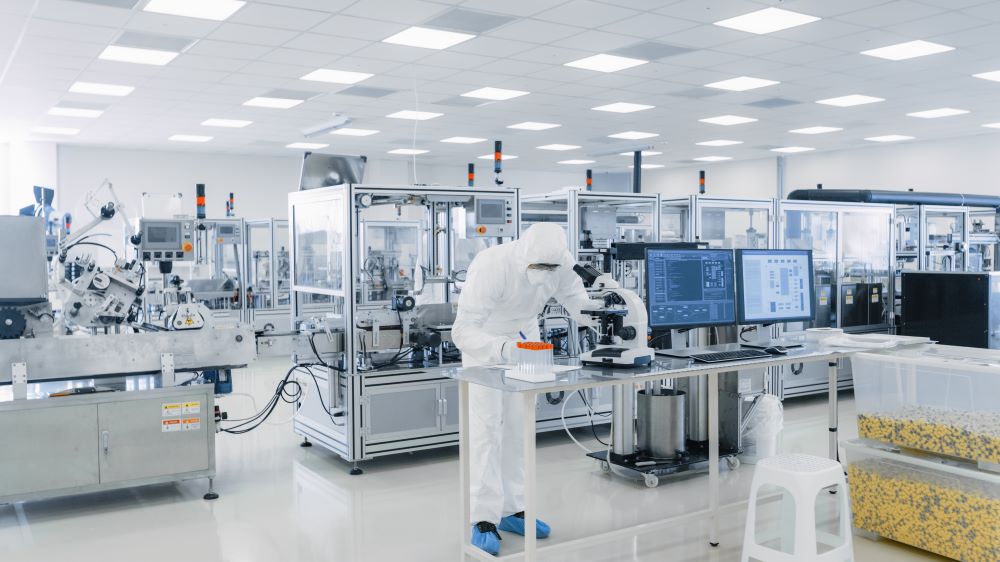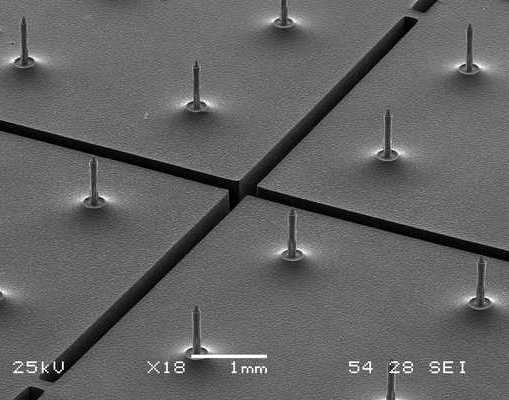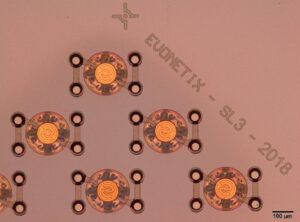MEMS for Life Science
Our life science MEMS add system functionality and improve performance whilst reducing cost, size and power consumption.
We apply expertise in biosensing, fluidics/optofluidics, sensing, integrated imaging and instrumentation to serve applications in drug screening, lab-on-a-chip, diagnostics and imaging/analysis.
Life science MEMS: A drive to integrate and miniaturize
The COVID-19 pandemic has driven rapid acceleration and adoption of new technologies across the life sciences sector. New ways of working and different social and regulatory environments have led to the almost instantaneous emergence of new priorities. Nonetheless, pre-existing drivers have not gone away. Both sets of priorities now sit alongside each other as key areas with huge potential for MEMS technology.
A move to point-of-need
Modern healthcare relies increasingly on the decentralization of routine processes. This speeds up access to care, reduces burden on centralized services and provides care to those without access to advanced facilities.
Furthermore, accessible testing for diagnostics and treatment monitoring is paving the way for a more personalized approach to medicine, improving outcomes and reducing the time, cost and distress involved in unnecessary treatments.
This trend is driving the development of point of need instrumentation using miniaturized, cost-effective components for bench-top instruments and consumable cartridges. These instruments need to be able to automate complex processes in miniature to provide practitioners with relevant information with minimum effort.
Streamlining drug discovery and development
As the recent pandemic has highlighted only too starkly there is, now more than ever, a need to streamline drug development timelines to respond to urgent needs for new drugs. The barriers are technical and regulatory as well as ethical. Complexity is increasing on all fronts, development timelines and costs can be huge and there is heightened pressure to reduce the use of animals in trials.
Certain fields stand to gain much through automation. Cell culture, tissue engineering, DNA synthesis, genomics and proteomics in particular are held back by overreliance on time-intensive batch processes.
The need is therefore for systems that can help streamline the discovery and development of new drugs through highly automated, high-throughput and/or parallelized processes. In this, microsystems have a role to play in creating scalable components with integrated functionality for high-throughput, intelligent systems.
Personalized, wearable and implantable: Next generation applications
The increasing sophistication of devices for medical diagnostics, monitoring and treatment is driving developments in miniaturized devices that can be worn or even implanted in the body. Such close synergy between device and patient is enabling unmatched levels of responsiveness and personalization in interventions.
In turn, these devices are underpinned by highly sophisticated miniaturized components that integrate different functionalities – mechanical, fluidic, electrical – all in tiny, robust and user-friendly packages.
Benefits of MEMS for life science
MEMS address drivers across the life sciences due to the specific set of benefits they offer including:
Device miniaturization
MEMS are some of the smallest machines on earth and are vital in addressing instrument size, sample volumes, use of chemicals, parallelization and power consumption. Small instruments also power wearable or implantable technology or in vitro/in vivo sensing.
Scalability for high throughput and point of care applications
Due to the highly scalable bulk fabrication processes used to in MEMS manufacturing, components can be scaled to large volumes.
Micrometer scale needles fabricated using MEMS processes
Rapid, automated processes and ease of use
MEMS offer highly integrated functionality and can be combined with fluidics, optics and electronics to offer more automation for use in micro total analysis systems (µTAS), screening or culturing processes. The same properties also increase ease of use and reduce human error and contamination in point of care devices.
Richer functionality and insight
Building more functionality onto chip-based systems increases the scope for real-time monitoring of systems as well as diagnostics, screening, culturing or lab-on-a chip applications.
High precision systems
Miniaturized components make for precise management of fluids, temperature, chemicals and mechanics. Smaller size also reduces consumption of reagents.
LioniX International solutions
Lab-on-a-chip/bioreactor
In the ESA Life Marker chip, LioniX International used a wide range of fabrication techniques to create a lab-on-a-chip system designed to detect biomolecules. The chip includes reaction chambers, fluid channels, in-and outlets, conductivity sensors and a configurable rotary valve, as well as an integrated evanescent field optical sensor.
For Evonetix we developed chips for desktop DNA synthesis. By integrating physics with biology on a silicon chip we enabled big improvements in synthesis throughput. Using MEMS fabrication steps we build a chip to control the synthesis of DNA strands at many thousands of sites in parallel.
Biosensing
Photonic chip biosensors are a core focus for LioniX International. We pioneered the use of on-chip interferometric refractive index biosensing, improving component sensitivity by a factor of one hundred. We also produce biosensors based on biofunctionalized ring resonators.
A novel DNA synthesis chip with individually controlled sites for DNA strands
Fluidics and optofluidics
We specialize in the integration of optics and fluidics and through our R+D partners. Consequently, we have developed expertise at the interface of engineering and (bio)chemistry, enabling effective surface chemistry and biofunctionalization.
Other chip based sensing
Sensors for pH, conductivity, gas flow, oxygen and glucose.
Imaging and analysis
We work in commercial and subsidized R+D projects and product development consortia to create microsystems for integrated imaging and analysis including:
- Spectroscopy
- Mass spectrometry
- Optical coherence tomography (OCT)
- Capillary electrophoresis
We have also developed hybrid tunable lasers for use in spectrometry and other imaging/metrology applications.
Instrumentation
Our life science instrument components include:



